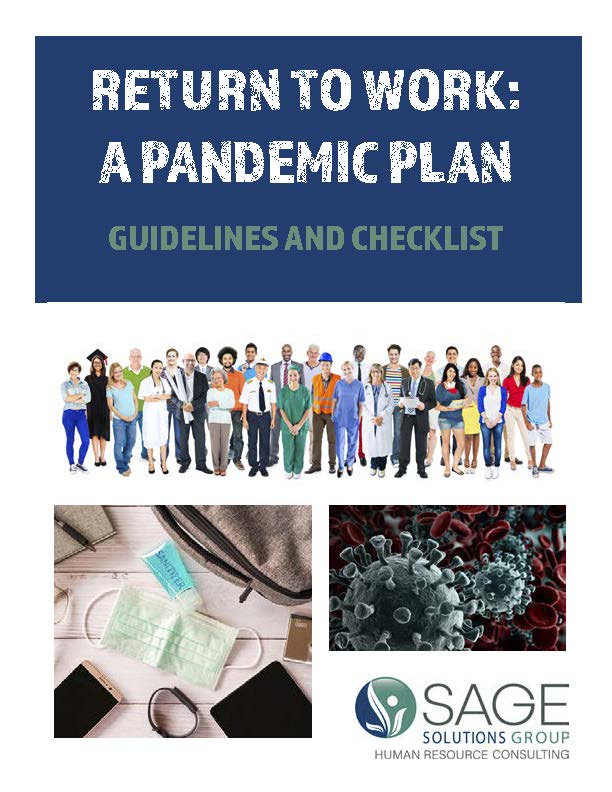8 Tips for Bringing Your Employees Back to Work Safely and Successfully
Now that more and more businesses are re-opening, it's important to understand how to safely bring your employees back to work.
Here are 8 tips to keep in mind:
-
 Continue to monitor executive orders and changes for COVID-19. These orders are coming out frequently and can significantly change the way you do business on a moment’s notice. Sage recommends reviewing your state and local government pages daily. If your organization does business in multiple states, there are web pages that monitor each state to help you stay on top of the changes nationally.
Continue to monitor executive orders and changes for COVID-19. These orders are coming out frequently and can significantly change the way you do business on a moment’s notice. Sage recommends reviewing your state and local government pages daily. If your organization does business in multiple states, there are web pages that monitor each state to help you stay on top of the changes nationally. - Manage the workplace. Create a pandemic team of individuals in key organizational areas who can analyze COVID-19’s effect on workforce changes, crisis management, financials, and more. This team can also help with monitoring practices, managing supplies and availability of supplies, developing social distancing measures, staggering breaks and lunch times for employees, and setting up temporary occupancy limits in areas throughout the workplace.
- Update company policies and procedures. There are local and state guidelines mandating “back to work” procedures for employees. Employers need to understand their responsibilities related to this. If you are stuck, contact Sage!
- Understand who are essential vs. non-essential employees. Clear guidelines are established to define who is essential. This is helpful to understand how to conduct business for the time being.
- Create and use heightened PPE, health, and safety measures. Employers need to determine the risks and potential exposures in their workplaces. Careful considerations and pre-planning are required to appropriately implement safeguards. These can include spacing workstations, frequent sanitation of shared equipment, and alternating lunch breaks for staff. Determine how, when and where PPE needs to be used.
- Know the legal implications for non-compliance. FFCRA, ADA, HIPAA, EEOC, FMLA, CARES Act and OSHA are just a few examples of issues that need to be considered. If this sounds more like alphabet soup and you are not sure where to begin, Sage can help!
- Communicate with your staff. These are challenging and stressful times for everyone. Create posters/flyers related to any new policies, procedures, and safety measures that your company has created so that employees have helpful reminders of what they need to do. Also ensure that employees have opportunities to ask questions.
- Educate others on your plan. Businesses should ensure that they share their pandemic safety plans with staff, clients, and visitors. This will help to make sure that everyone understands their responsibilities related to maintaining a safe workplace.
Lastly, to help ensure all areas are considered, Sage Solutions Group recommends completing a Pandemic Plan Checklist including the following critical aspects:
- Business impact plan
- People impact plan
- Establish policies to enact
- Develop communication protocols
- Collaborate with external organizations
- Prepare for the aftermath
Need help preparing your workplace during the COVID-19 Pandemic? Sage Solutions Group can help! Contact us at 734-855-7189 or visit our website at www.sagesolutionsgroup.com.
